“The only reason for being a bee is to make honey. And the only reason for making honey is so I can eat it.” -Winnie The Pooh
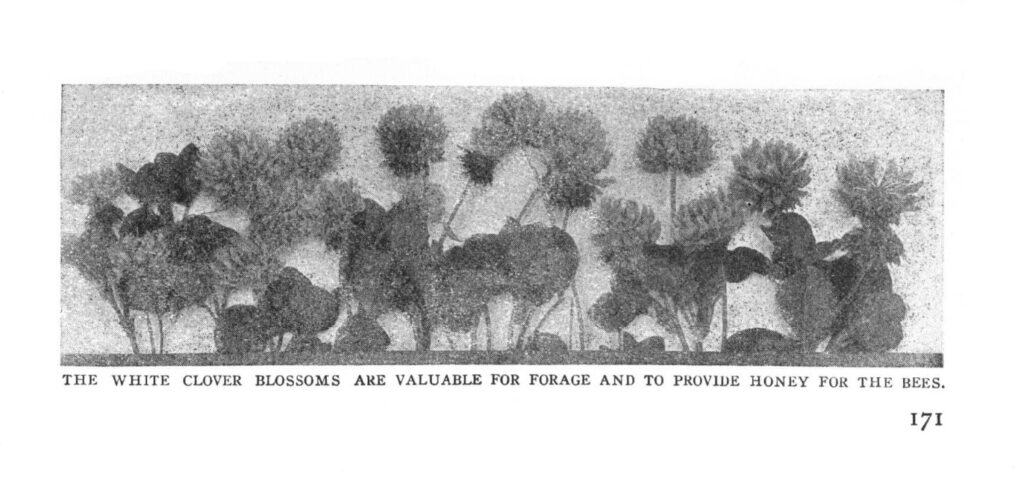
It’s officially fall, and around here that means the air is getting cooler (slowly), leaves are starting to change (eventually), and the honeybees are visiting asters and goldenrods to make their honey.
Asters and goldenrod are two important late-season pollinator plants, critical for visiting insects like the honeybee, looking for food as summer’s bountiful resources dwindle with the change in season. It’s these raw materials that give fall honey its darker color and more robust flavor.
“The goldenrod, that is so often found in company with the aster… is one of the most beautiful of all our yellow flowers, and that is praise indeed.” (The Craftsman, March 1904)
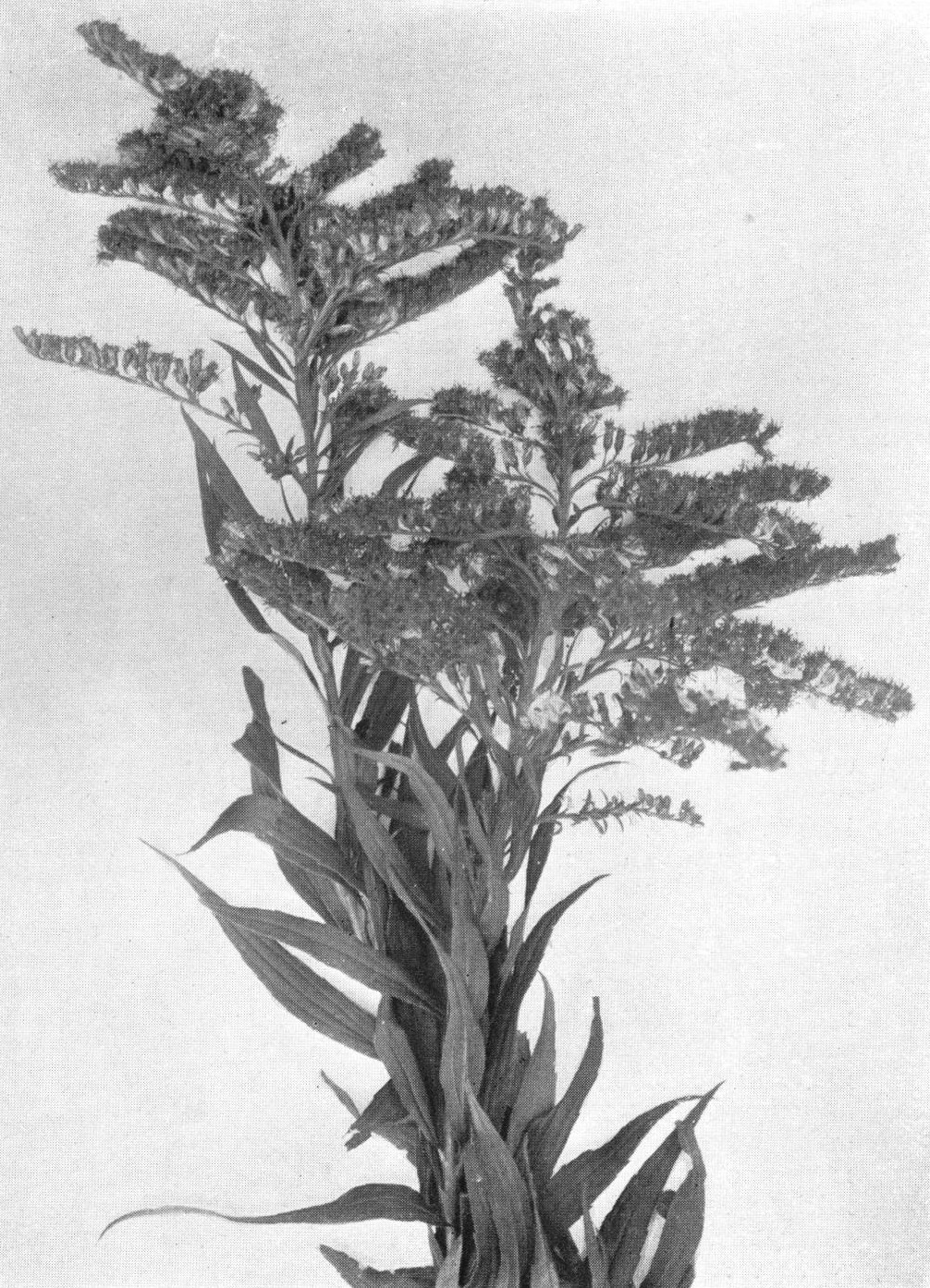
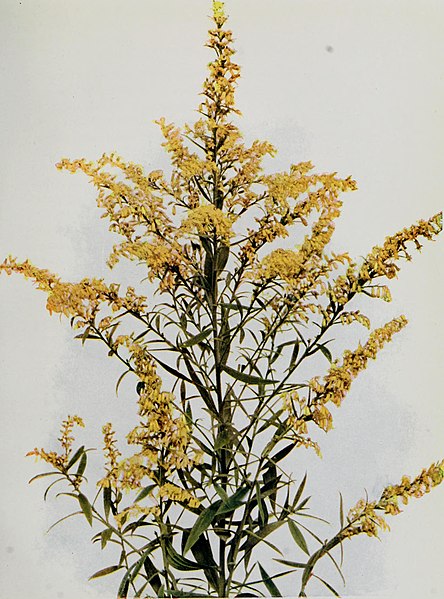
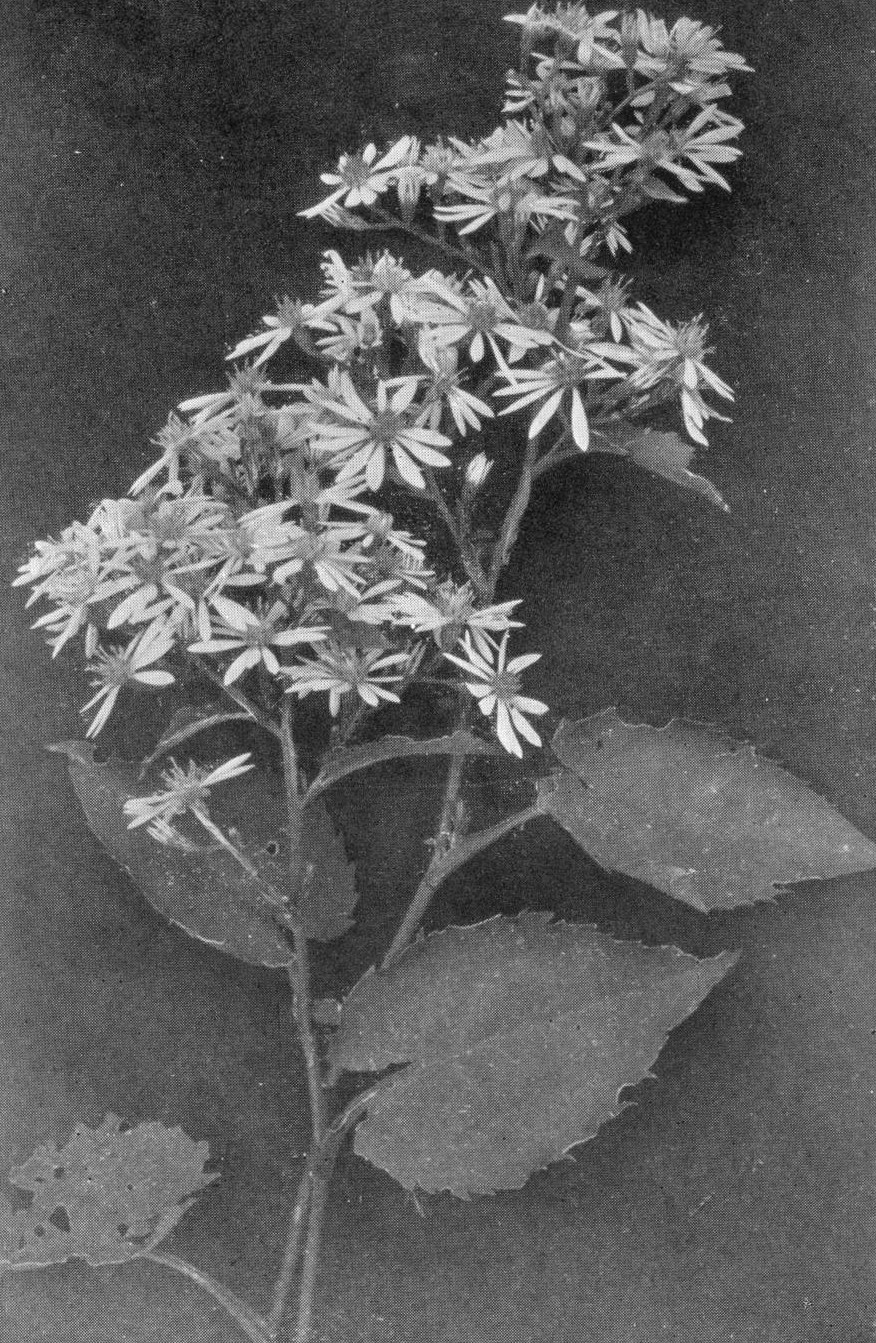
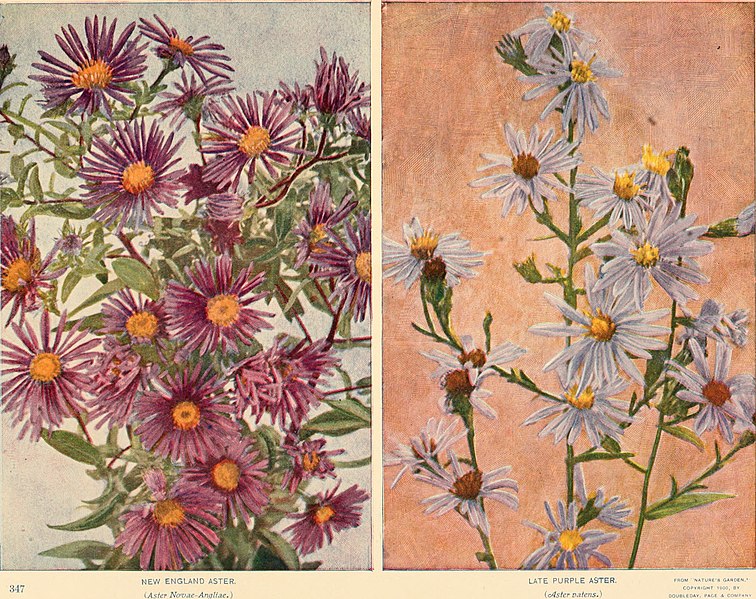
Fall also means we are getting ready for our annual Craftsman Gala! Our signature cocktail for this year’s Gala is a play on the classic Tom Collins, a honey-sweetened version we’re calling a Craftsman Collins. Made with honey instead of sugar, the floral flavors of the honey play deliciously with gin’s botanical notes, with just the slightest hint of sweetness.
The Tom Collins is a classic cocktail that has been around since the late 19th century and is the result of a prank. The Tom Collins Hoax of 1874 began with a jokester asking an unsuspecting listener “Have you seen Tom Collins?” and alleging some vile slander against the listener, sending them on a wild goose chase searching for the perpetrator, Tom Collins. At some point the prank inspired a cocktail of the same name, probably after one too many bartenders had to deal with an aggravated man looking for Tom Collins. Someone finally just gave him what he wanted!
The Tom Collins (cocktail) seems to have first appeared in print in the 1887 edition of Jerry Thomas’ Bar-Tender’s Guide (first published in 1862), with whiskey, brandy or gin being used as the base spirit. In 1888 the Tom Collins is included in Harry Johnson’s New and Improved Bartender’s Manual or How to Mix Drinks of the Present Style. Johnson’s recipe calls for a mix of gin, lemon juice, sugar, soda water, and ice, and even with many variations on the theme, the classic Tom Colins recipe hasn’t changed since.
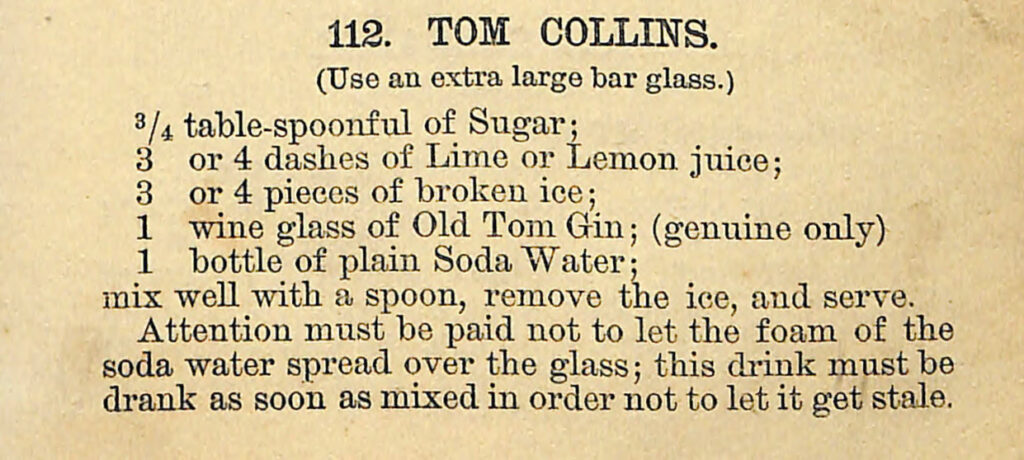
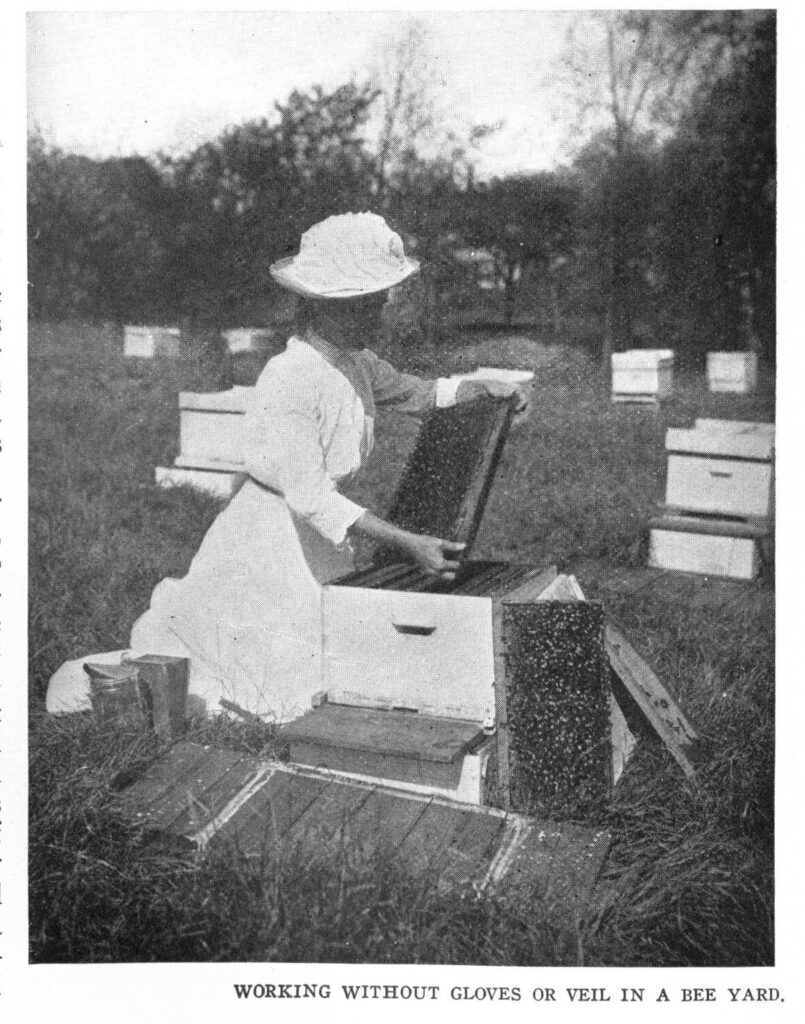
An October 1913 article in The Craftsman, titled, “When the Amateur Keeps Bees,” looks at beekeeping from a business perspective, asking its readers, “how much do your bees earn you?” With the added bonus of “supplying the table with one of the most wholesome delicacies to be found in Nature’s storehouse,” beekeeping is therefore deemed a worth-while hobby. The Craftsman cautions that the management of bees should not be undertaken until a good book on the subject has been read,” and recommends reading prominent Belgian writer Maurice Maeterlinck’s, “The Life of the Bee,” (published in 1901) among other volumes.
We credit Maeterlinck with popularizing the idea that bees are an ecological linchpin, without which, humankind simply would not survive. (He also won the Nobel Prize in Literature in 1911.) In an oft misquoted (and misattributed) passage from his book, he asserts that hundreds of thousands of plant varieties depend on the humble little bee for their continued existence.
“You will probably more than once have seen her fluttering about the bushes, in a deserted corner of your garden, without realising [sic] that you were carelessly watching the venerable ancestor to whom we probably owe most of our flowers and fruits (for it is actually estimated that more than a hundred thousand varieties of plants would disappear if the bees did not visit them), and possibly even our civilisation [sic], for in these mysteries all things intertwine.”
It’s no wonder then that bees, and other insects, have long been a popular source of inspiration in design. In the Arts & Crafts insects are found as painted, printed, embroidered, or wrought motifs across many mediums.
One such example described in detail in The Craftsman is a hair comb, “exquisitely wrought,” by French jeweler, Rene Lalique. According to the Minneapolis Institute of Art, this comb was ordered in Paris in 1900 by Mrs. Howard Mansfield of New York who likely commissioned it while attending the Paris International Exposition in 1900. Decorated with gold and enamel and set with diamonds, the “enameled bees with wings, transparent as in nature, are seen scaling flower-stalks and gathering honey; the poise of the insects telling that they are intoxicated with perfumes, unwieldy through weight, and that their legs are hindered by wax: a situation drawn to the very life and rich in the most delicate humor.”
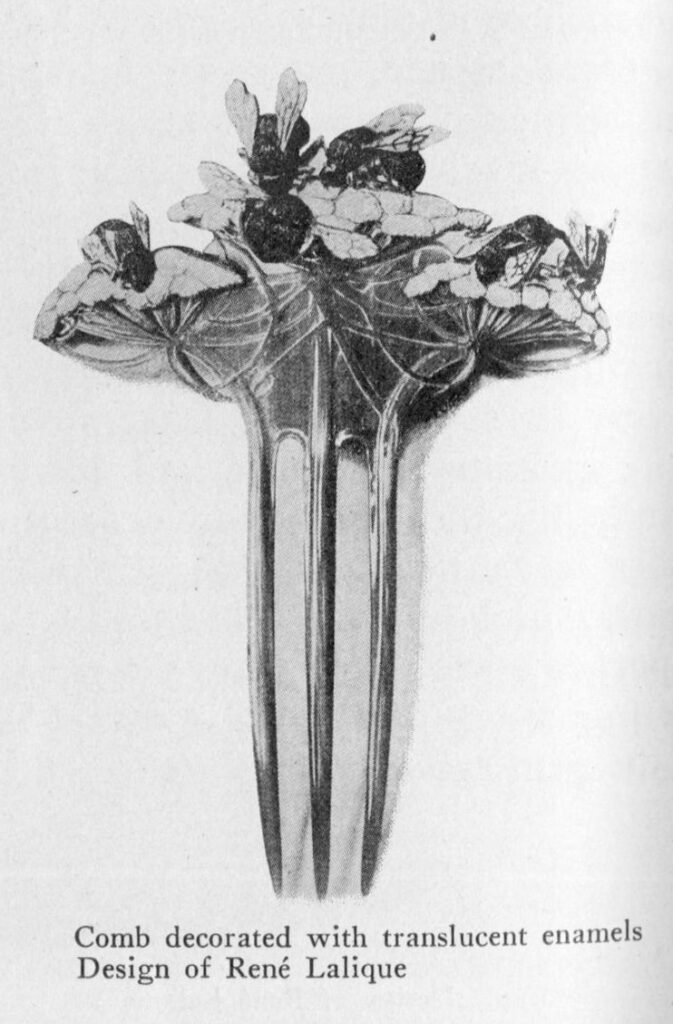
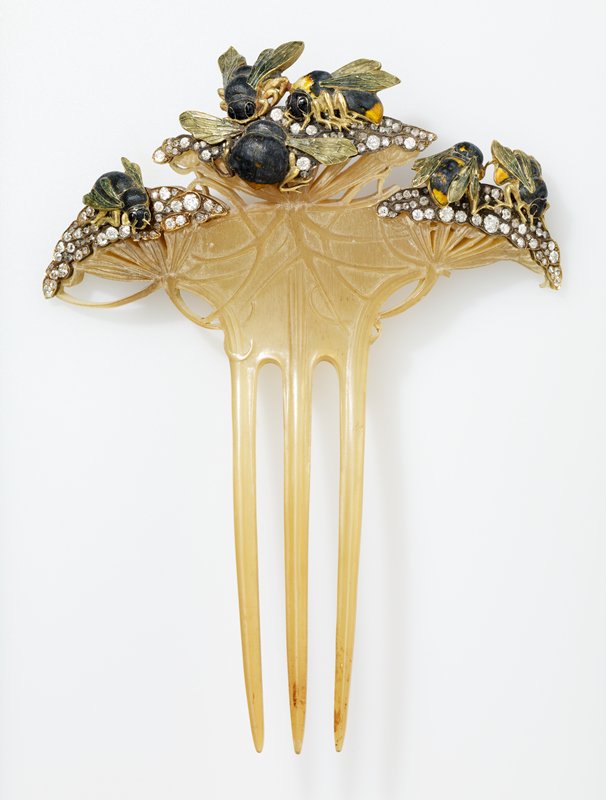
Bees captivate our imagination from the complex way they live and work communally, how the tiny creatures support the larger ecosystem, to the delicious fruits of their labor. National Geographic calls honeybees “some of the most successful collaborators we’ve found in nature.” A large population of worker bees share the jobs that keep a hive functioning and productive. In fact, a hive’s complex hierarchy of roles is not unlike the division of labor found at a factory like the Craftsman Workshops. Would that make Gustav Stickley the queen bee in this scenario? I suppose it does, and I don’t hate it.
“There is a world beneath our world, above it, within it, all around it, which we do not suspect. Lightly, gently, at certain moments, we hear it murmur or rustle, and then we say: “That is something insignificant; the is nothing.” But that nothing is the infinite.” (The Craftsman, March 1904).
By Kristen McCauley, Senior Manager of Education and Interpretation
“Craftsman Collins” Recipe
This variation on a classic Tom Collins uses honey instead of plain sugar to make simple syrup.
Honey syrup Recipe
Ingredients:
1/4 cup honey (adjust to taste)
1/4 cup water
Yields enough for 6-8 cocktails. Scale as necessary.
Directions:
Add the honey and water into a small saucepan over medium heat. Stir until the honey is dissolved.
Remove the pot from heat and allow to cool.
Transfer to an airtight container. Syrup will keep, refrigerated, for up to 1 month.
Cocktail Recipe
Ingredients (per cocktail)
• Ice
• 2 ounces gin
• 1 ounce lemon juice
• ½ ounce honey syrup
• Club soda or sparkling water
• 1 lemon round for garnish
• 1 cocktail cherry for garnish
Directions
- To a shaker full of ice, add gin, lemon juice and honey syrup. Shake until the outside of the shaker is really cold. About 20 – 30 seconds.
- Fill a tall glass with ice. Strain the contents of the shaker into the glass. Top off your glass with club soda, and give it a gentle stir with a spoon.
- Garnish with a lemon round and a cocktail cherry. Enjoy.
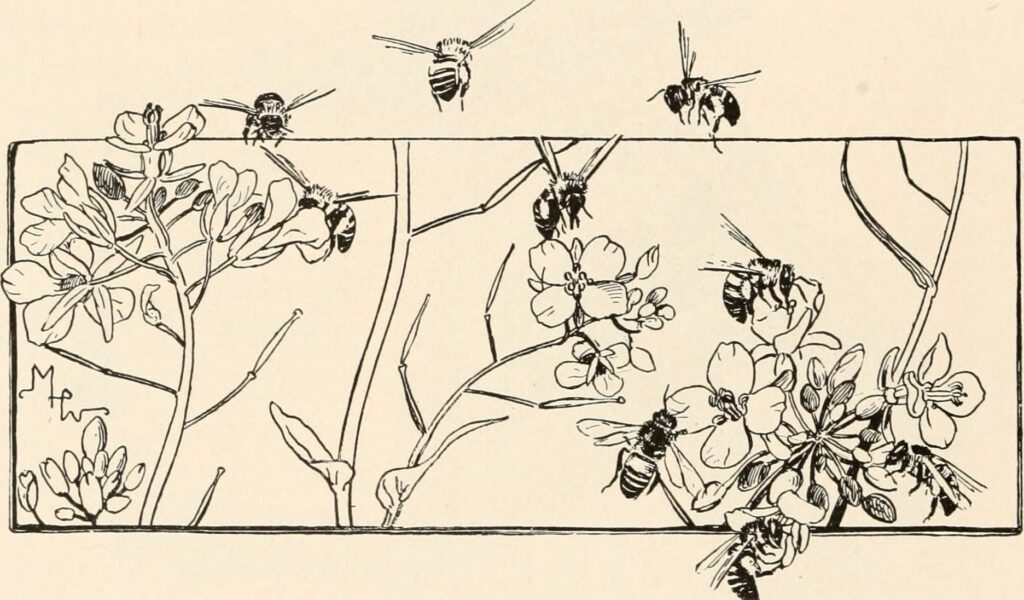
Sources:
Farrington, E. I., “When the Amateur Keeps Bees,” The Craftsman, October 1913.
https://search.library.wisc.edu/digital/ABBV3VJV6UOFYT8C/pages/AOBEEUT4GVBO748A
Roorbach, Eloise, “FLOWER GOLD FOR FALL BEAUTY” The Craftsman, August 1915.
https://search.library.wisc.edu/digital/AC3W3RKGXJ2DUS8G/pages/ARREDE66WKL33J8I
Sargent, Irene. “Rene Lalique : His Rank among Contemporary Artists,” The Craftsman, November 1902.
https://search.library.wisc.edu/digital/AKXL2UNZHLC6ZC8I/pages/ASALA6QOSM6E628Y
Verneuil, M. P. “The Insect in Decoration,” Translated from the French by Irene Sargent. The Craftsman, March 1904
https://search.library.wisc.edu/digital/A6H7KMI5Y4LADD8H/pages/ACIFUNSUMFVUDT8W
“Goldenrod and Asters: Nature’s Royal Embroideries of Purple and Gold,” The Craftsman. Volume XXVIII, Number 6 September 1915
https://search.library.wisc.edu/digital/A5G4SQ223OE6C48N/pages/A4X4AKTZHOP5XY9C
“Bee-Friendly Flowers Week 12: Aster” https://www.dukefarms.org/making-an-impact/distance-learning/bee-friendly-flowers-week-12-aster/
“Bee-Friendly Flowers Week 13: Goldenrod:” https://www.dukefarms.org/making-an-impact/distance-learning/bee-friendly-flowers-week-13-goldenrod/
Hertzberg, Richie, “Every bee in a hive has a job. Here’s how they get them.” National Geographic, March 22, 2019.
https://www.nationalgeographic.com/animals/article/honey-bee-job-queen-hive-animals
Maeterlinck, Maurice, “The life of the bee,” New York, Dodd, Mead, 1901.
https://archive.org/details/lifeofbee00maur/page/389/mode/2up
Thomas, Jerry, “The Bar-tender’s Guide, or How to mix all kinds of plain and fancy drinks.” New York, Dick & Fitzgerald, 1887. https://archive.org/details/bartendersguideo00thom/page/52/mode/2up
Johnson, Harry, “New and Improved Bartender’s Manual or How to Mix Drinks of the Present Style.” New York City, 1888.
https://euvs-vintage-cocktail-books.cld.bz/1888-Harry-Johnson-s-new-and-improved-bartender-s-manual-1888/70/
Rene Jules Lalique, Hair comb. Celluloid with gold, enamel and diamonds. 1900. Minneapolis Institute of Art.
https://collections.artsmia.org/art/292/hair-comb-rene-jules-lalique